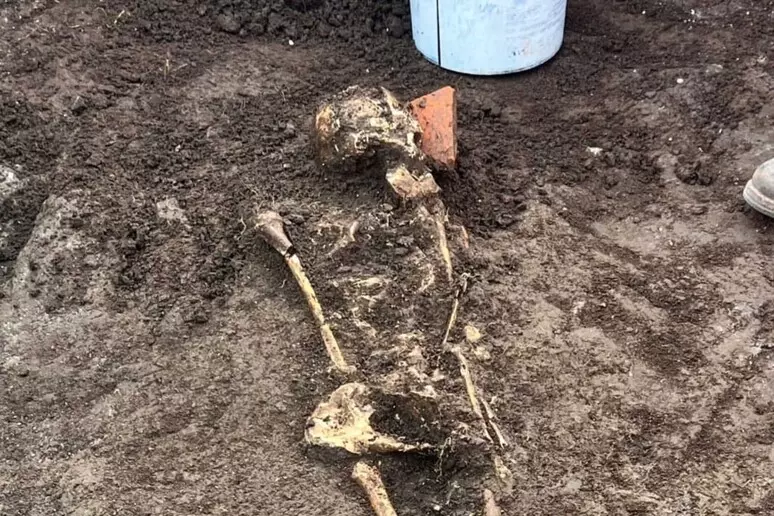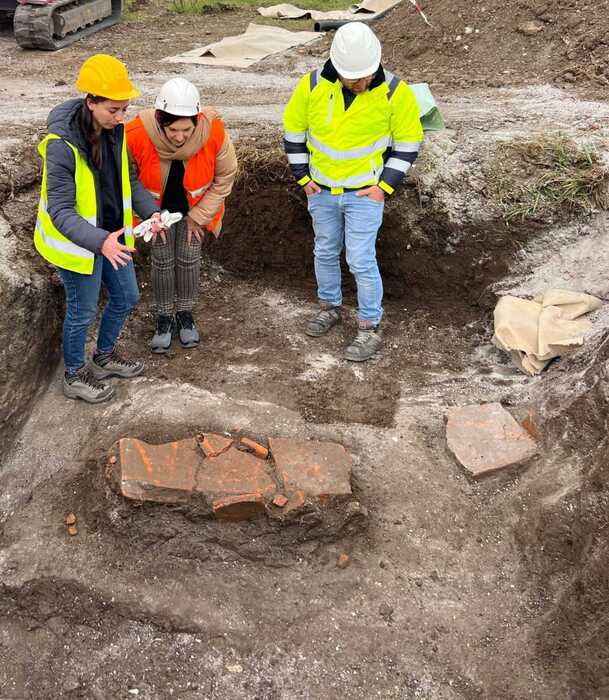In Atena Lucana, an area in the province of Salerno in southern Campania, two tombs belonging to a large funerary settlement have been found that archaeologists trace to the Late Roman Age, the last phase of Roman political history, generally placed between 235 AD and 476 AD. This period is marked by profound political, social and religious changes that mark the transition from the ancient to the medieval world. The unexpected discovery was made during archaeological surveillance activities conducted by the Superintendence of Archaeology and Fine Arts (Soprintendenza Archeologia Belle Arti e Paesaggio) of Salerno and Avellino following the construction of a power line.
The first tomb, despite being partially damaged, has a well-preserved human skeleton still in its original position, and a tile covering along with some fascinating funerary objects. The second burial, on the other hand, is very damaged, which allowed the team of archaeologists from the Archeoservizi company, led by Dr. Antonio Mesisca, called in for the occasion, to recover only some bone remains and some fragments of the tomb structure. In fact, it appears that the latter has undergone some tampering in later periods.

As Il Giornale del Cilento reports, scholars speculate that the two burials are part of a larger cemetery area, yet to be investigated and studied, suggesting a well-structured human settlement in Roman times. Scholars also stress the importance of the discovery, which adds a new piece to the history of the area, confirming its central role in the socio-economic sphere as a crossroad of cultures and populations in past centuries. Currently, the Superintendency has initiated further investigations that will continue in the coming months, with the aim of finding other traces or evidence from the period to better understand religious and particularly funerary practices in late Roman culture.












